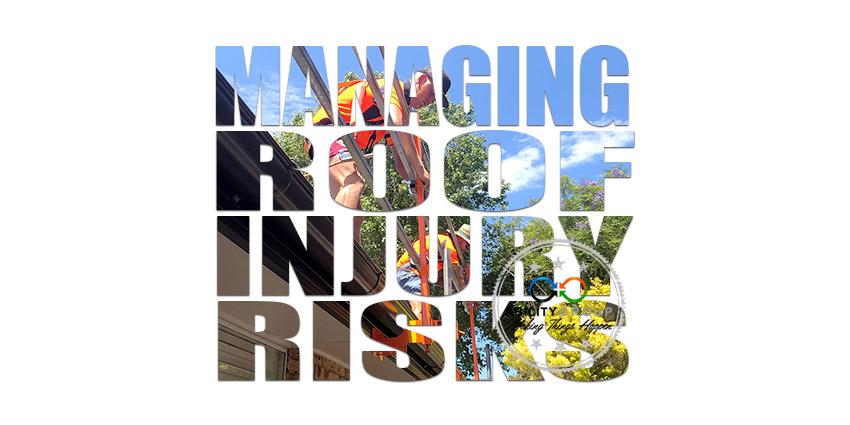WorkSafe has issued a safety alert to remind businesses of their obligations to protect their workers and prevent injuries that could occur from falls from roofs and other dangerous heights. Managing roof injury risks is an important responsibility for many businesses & key steps can reduce hazards, risks, injuries & costs.
Working on roofs can be risky for businesses and their workers. Prevention of injury is key in keeping workers safe when they are undertaking maintenance tasks at unsafe heights.
Falls are a leading cause of workplace fatalities, often as a result of inadequate fall prevention or incomplete systems of work when working at heights. The risk of internal falls can occur where:
- there are roof penetrations (for example, vents or exhaust fans)
- there are sky-lights or materials that can degrade over time (plastic or polycarbonate sheeting), which are unsafe to walk or stand on
- the roofing or support structure is fragile or deteriorated (for example, aged asbestos cement sheeting) or the roof strength is unknown
Before commencing work, there are four important steps to control the risk of roof falls:
- Carry out a full inspection to identify any internal fall hazards
- Confirm the integrity of the roofing/roof structure
- Prepare a work plan to avoid the need to access unsafe areas
- If unsafe areas cannot be avoided, ensure fall prevention devices are used, such as:
- guard railing around openings and fragile areas
- engineered coverings installed across openings and fragile areas and secured in place (for example, proprietary systems or appropriately specified plywood sheeting) with warning signs highlighting the hazard
- install safety mesh – do not rely on existing safety mesh as it can become compromised over time
- performing the task from an elevating work platform (EWP) or scaffold to gain access to the work area, whilst still avoiding the need to access the roof
If a passive fall protection device cannot be implemented, other controls to reduce risk can be used such as a work positioning system (travel-restraint system) or a fall arrest system. These systems need to have adequate installed anchorage points.
Employers have legal duties under the Occupational Health and Safety Act 2004 to:
- provide and maintain a working environment that is safe and without risks to the health of employees and independent contractors
- provide and maintain plant or systems of work that are safe and without risks to health
- provide employees with the necessary information, instruction, training or supervision to enable them to do their work in a way that is safe and without risks to health
- ensure that people other than employees are not exposed to risks to their health or safety arising from the employer’s conduct
- consult with employees and health and safety representatives when identifying or assessing hazards or risks and making decisions about risk control measures.
Both employers and self-employed persons must:
- ensure, so far as is reasonably practicable, that persons (other than employees) are not exposed to risks to their health or safety arising from the conduct of the employer or self-employed person’s undertaking
- establish emergency procedures and maintain a safe work method statement to protect workers from falls over 2m
Source: Safe work Australia
Title: Key steps to manage roof injury risks
Read time: 10 mins

